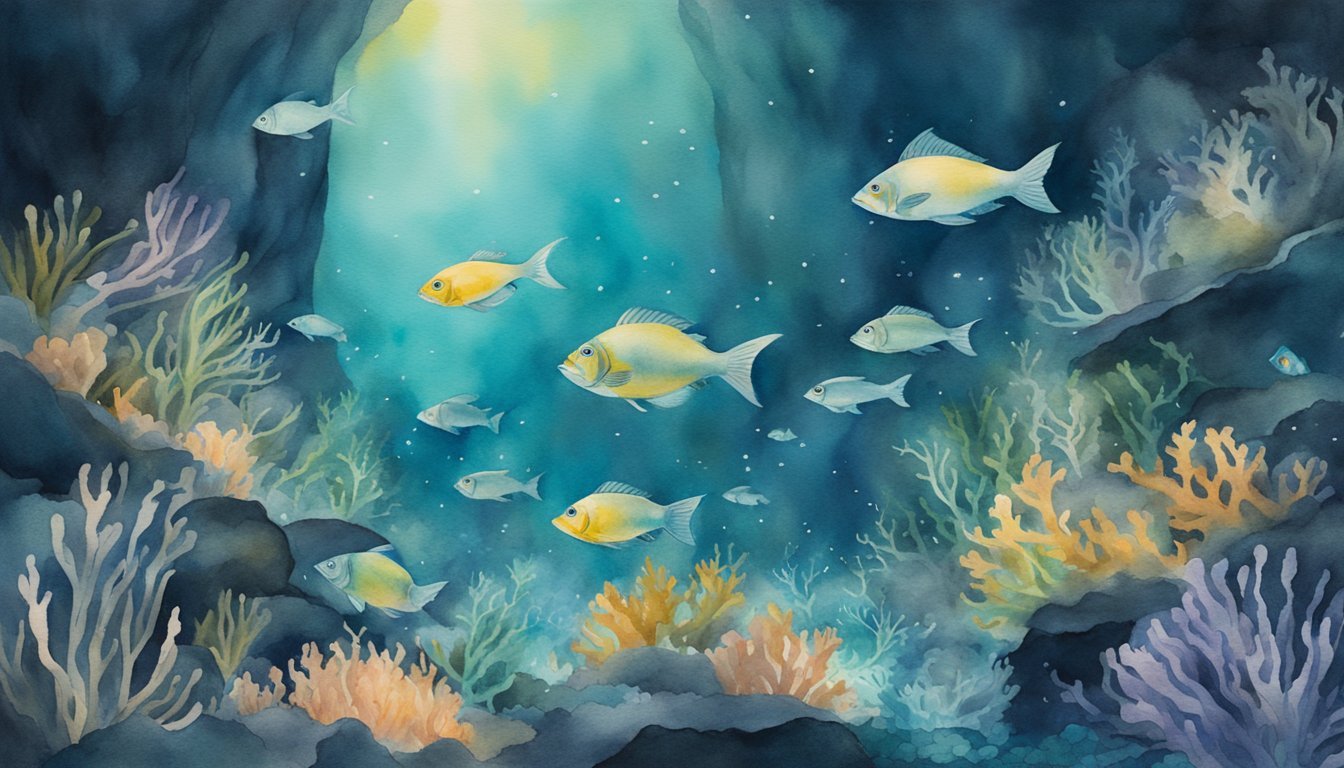Understanding Ocean Depth
To grasp the vastness of the ocean’s depths is to explore a world of extreme environments and extraordinary geographical features.
Majestic Trenches and Oceanic Plains
The ocean floor is a landscape of contrasting features, from extensive plains to the remarkable trenches that hold the record for the deepest points below water. The most renowned of these is the Mariana Trench in the Pacific Ocean, with its deepest point, the Challenger Deep, reaching an astounding 10,935 meters (35,876 feet). This trench exceeds the height of Mount Everest by several thousand meters if compared inversely.
Measuring the Depths
Accurately measuring the ocean depth requires sophisticated equipment such as echo sounders and sonar. These technologies map the seafloor by sending sound pulses to the bottom and measuring the time it takes for them to return. Depths across the ocean vary greatly, but the average depth hovers around 3,688 meters (12,100 feet).
Global Ocean Geography
The geography of the global ocean encompasses the vast Atlantic, Pacific, Indian, and Southern Oceans, as well as the frigid Arctic sea. Each ocean has unique zones that are determined by light availability, temperature, and pressure. As one descends, light dwindles to perpetual darkness, and pressures can reach up to 1,000 times that at the surface. The seafloor itself is shaped by tectonic activity, leading to the formation of features such as the continental shelf, slope, and deep-sea trenches like the Java Trench.
Life in the Depths

The mysterious deep sea is home to diverse species that have adapted to extreme conditions, revealing the remarkable resilience of marine life in the absence of sunlight and under immense pressure.
The Dark and Cold Ecosystem
The deep ocean, particularly the zone known as the twilight zone, exists in perpetual darkness. This area starts at about 200 meters below the ocean’s surface, where sunlight fades. Life here must endure the cold and the absence of photosynthesis, which provides the foundation for most marine ecosystems. Instead, organisms like bacteria break down detritus, known as marine snow, which drifts down from upper layers.
Unique Habitats and Organisms
Deep sea habitats include unique features such as hydrothermal vents that host life forms entirely independent of the sun. These ecosystems are fueled by chemosynthetic bacteria that convert the vent’s mineral-rich fluids into energy. This supports a diversity of life, including distinct species of fish, deep sea corals, and bioluminescent organisms like certain types of squid, which use their glow to communicate and attract prey.
Human Exploration and Its Impact
Deep ocean exploration is challenging, often requiring advanced technology like remotely operated vehicles and manned submersibles. Researchers aim to understand the deep’s biodiversity and its role in the ocean’s overall health. However, human activities such as deep-sea mining and the consequences of climate change threaten these fragile ecosystems. Scientists continue to explore the deep to broaden our understanding and inform conservation efforts.

